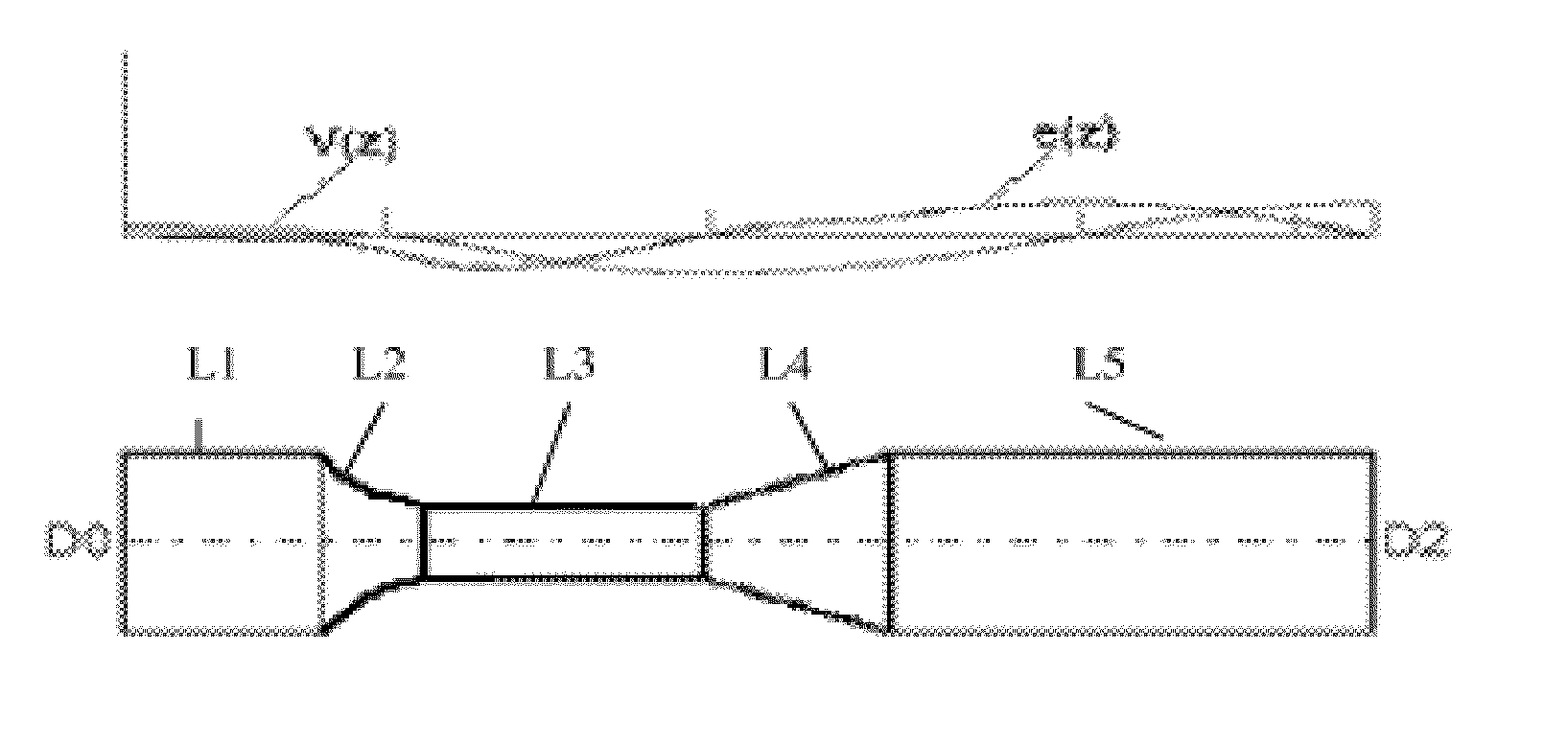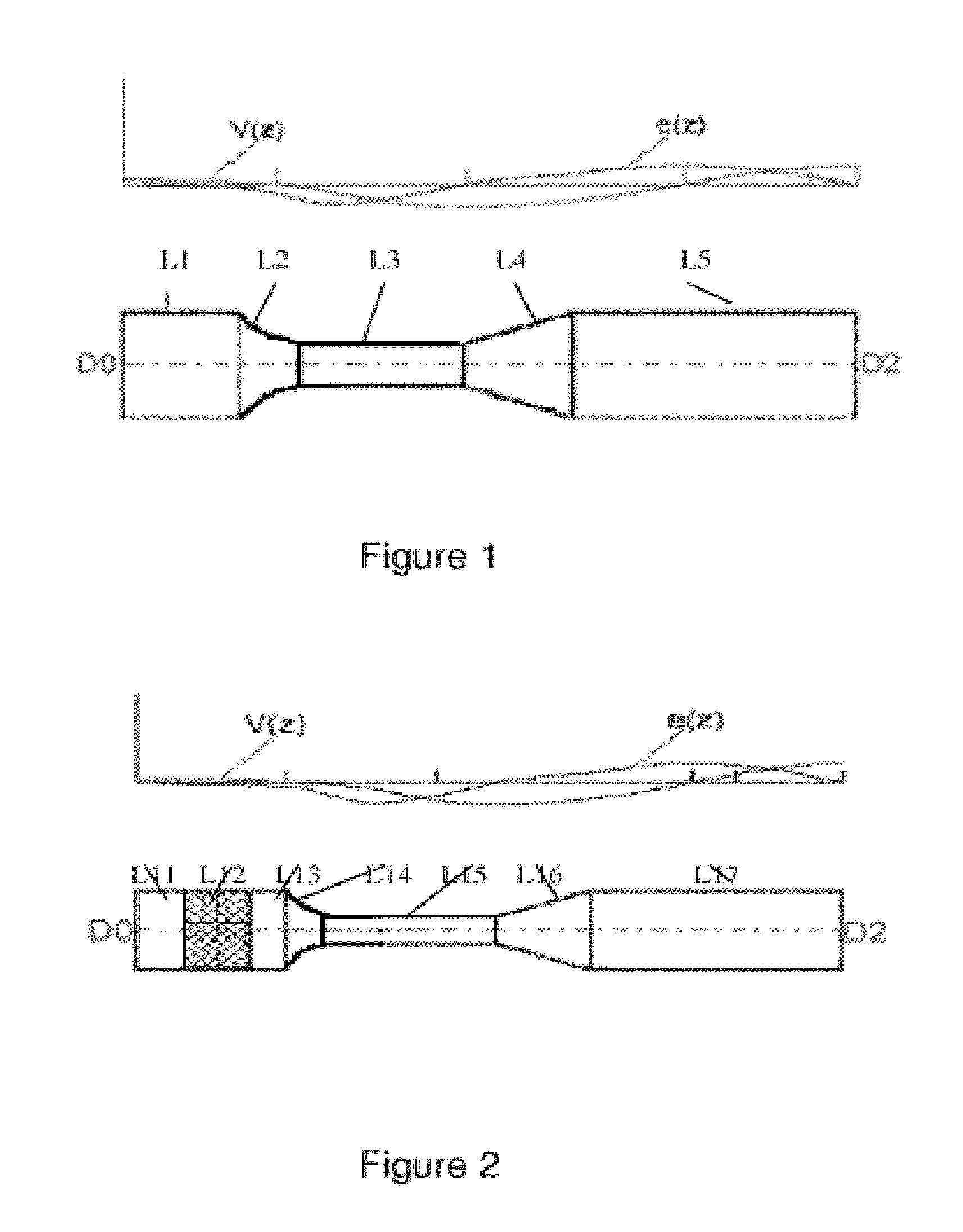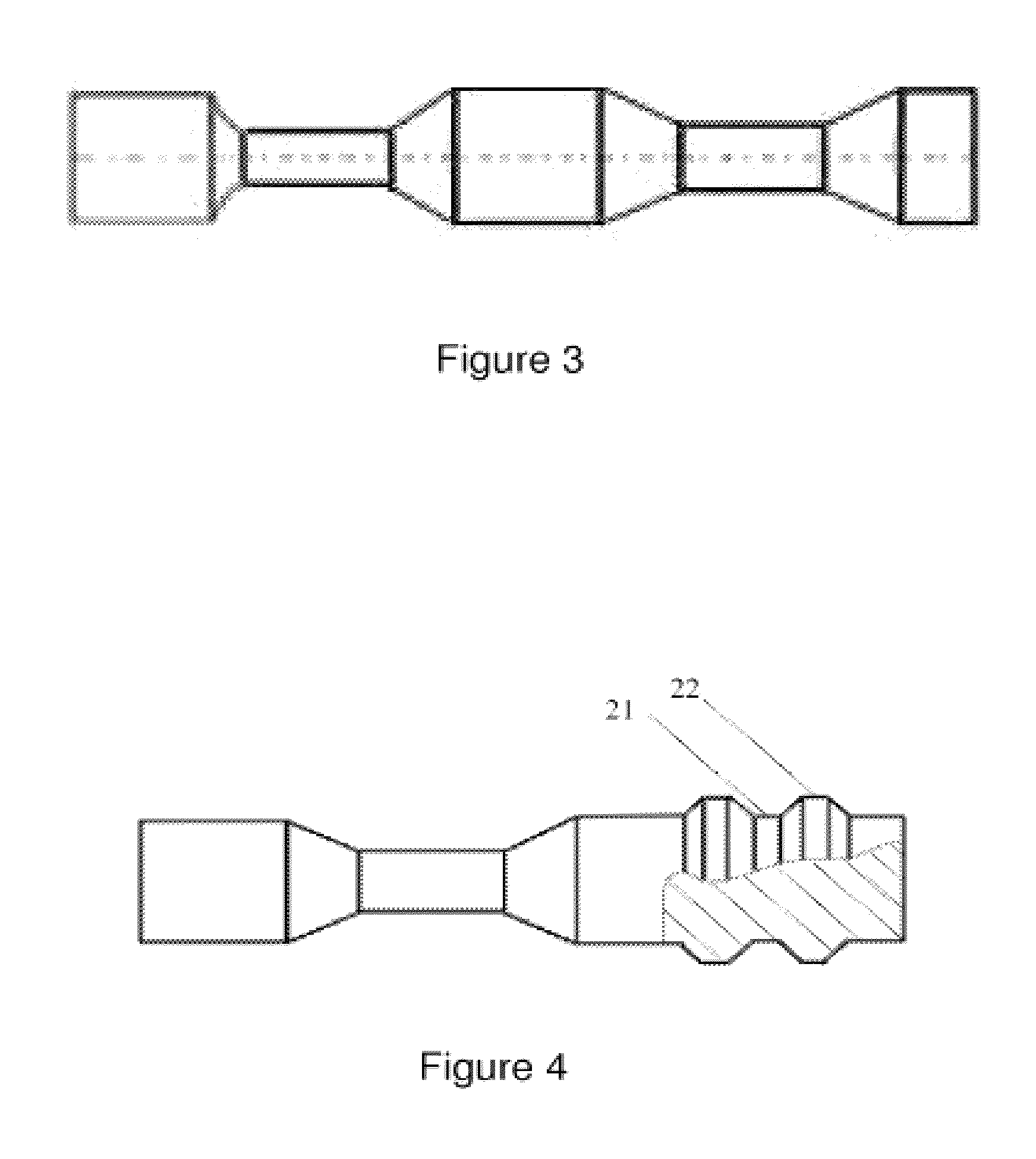High capacity ultrasonic reactor system
a reactor system and ultrasonic technology, applied in the direction of generator/motor, mechanical vibration separation, instruments, etc., can solve the problems of limiting the ability of ultrasonic generators to create powerful ultrasonic cavitation fields, increasing always at the expense of output surface areas, etc., to maximize the transfer efficiency of ultrasonic generators, increase the available radiation surface and the uniform distribution of acoustic energy, and increase the intensity of acoustic energy radiated
- Summary
- Abstract
- Description
- Claims
- Application Information
AI Technical Summary
Benefits of technology
Problems solved by technology
Method used
Image
Examples
embodiment 1
[0067]Catenoidal Barbell Horn
[0068]U.S. Pat. No. 7,156,201 provides a system of equations that is suitable only for calculating the Barbell Horns (or Transducer Barbell Horn Assemblies) with cone-shaped transitional sections (parts of the horns that have changing cross-sections). Additionally, a restriction exists in the description and in the claims of the same prior art, requiring that the length of any transitional section be equal or greater than Log(N) / k, where k=ω / C is the wave number, N is the ratio of the diameters of the thick and the thin cylindrical sections that are adjacent to the transitional section, ω is the angular vibration frequency, C is the sound velocity in the horn material at the transitional section (with phase velocity dispersion taken into account). This restriction came from the fact that the specified length of the transitional section is critical from the standpoint of the passage of a longitudinal acoustic wave. Such selection of the length of the tran...
first embodiment
[0070]The following example provides clarification of the abovementioned theoretical explanation. Catenoidal Barbell Horn was calculated for the operation frequency of 20 kHz, having catenoidal first transitional section of the length significantly smaller than the value Log(N) / k. FIG. 1 shows a Catenoidal Barbell Horn according to the present invention, where V(z)—distribution of the amplitude of vibration velocity along the horn length, e(z)—distribution of the deformation along the horn length, with lengths L1-L5 representing the lengths of the corresponding horn elements, respectively. In a preferred embodiment, the Catenoidal Barbell Horn has the following lengths: L1=54.33 mm, L2=20.61 mm, L3=54.33 mm, L4=41.22 mm, L5=106.71 mm, Gain=5.16, D0=D2=50 mm, Freq=20 kHz, and is made from 2024 aluminum. It can be seen from the figure that although the transitional section L2 is significantly shorter than Log(N) / k, the deformation change along the horn is smooth and continuous, withou...
embodiment 2
[0071]Catenoidal Transducer-Barbell Horn Assembly
[0072]Barbell Horn incorporating an active acoustic transducer for converting electric energy into acoustic energy was described in U.S. Pat. No. 7,156,201. In this device, piezoelectric annular transducers are situated in the Barbell Horn close to the node locations, and, because the utilized Barbell Horn has a gain factor greater than unity, the amplitude of the vibrations at the output end of the assembly is much higher than the amplitude of the vibrations of the piezoelectric annular transducers themselves.
[0073]The first transitional section of this device, however, was limited to having a conical shape and the length equal or greater than the value Log(N) / k (Conical Transducer-Barbell Horn Assembly). In the present invention, a Catenoidal Transducer-Barbell Horn Assembly is introduced, having catenoidal first transitional section of the length significantly smaller than the value Log(N) / k. FIG. 2 shows this assembly along with t...
PUM
 Login to View More
Login to View More Abstract
Description
Claims
Application Information
 Login to View More
Login to View More - R&D
- Intellectual Property
- Life Sciences
- Materials
- Tech Scout
- Unparalleled Data Quality
- Higher Quality Content
- 60% Fewer Hallucinations
Browse by: Latest US Patents, China's latest patents, Technical Efficacy Thesaurus, Application Domain, Technology Topic, Popular Technical Reports.
© 2025 PatSnap. All rights reserved.Legal|Privacy policy|Modern Slavery Act Transparency Statement|Sitemap|About US| Contact US: help@patsnap.com



